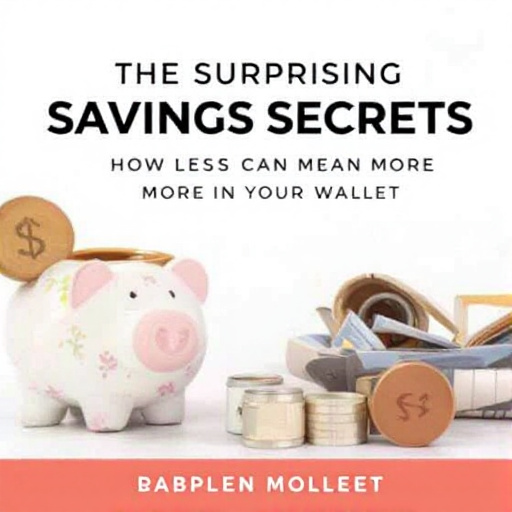Featured Articles
- Beyond Coupons and Budgets: Unveiling the Surprising Role of Sleep Patterns in Financial Well-being
- "Saving Green: How Urban Foraging Can Slash Your Grocery Bill While Reconnecting with Nature"
- Saving Space, Saving Cash: Uncovering the Financial Benefits of Minimalist Living and Decluttering Your Life
- The Surprising Savings Secrets of Minimalist Living: How Less Can Mean More in Your Wallet
- Top 8 Innovative Budget Tools Launched in the Last 5 Years: Expert Comparison & Reviews to Maximize Your Savings
"Saving Green: How Urban Foraging Can Slash Your Grocery Bill While Reconnecting with Nature"
"Saving Green: How Urban Foraging Can Slash Your Grocery Bill While Reconnecting with Nature"
Urban foraging offers a unique opportunity to reduce your grocery expenditures while deepening your connection with nature. This article delves into the benefits, practical techniques, and exciting experiences of gathering food in your urban environment.
Why Forage? The Economic and Ecological Benefits
Foraging isn’t just a fun hobby; it’s a practical approach to saving money. With the average American family spending around $4,643 on groceries in 2021, urban foraging presents a way to cut those costs substantially without compromising nutritional value (U.S. Bureau of Labor Statistics).
Moreover, foraging plays a significant role in enhancing urban biodiversity. By utilizing local plants and mushrooms, foragers contribute to ecosystem health, helping to replenish populations that may be diminished in urban areas (Nash, 2016). It’s a win-win situation; your wallet stays fuller, and nature thanks you for it!
A Personal Story: My First Foraging Adventure
Let’s rewind to my first foraging experience. I was a wide-eyed 22-year-old, armed with nothing but a backpack and a tattered guidebook that looked like it had survived multiple decades. As I walked through a city park on a sunny Saturday, I began to notice clumps of wild garlic growing along the edges of the walking path. Excited, I plucked a handful, imagining the pesto I would make that evening.
This initial triumph set off a chain reaction; within an hour, I had gathered dandelion greens, purple clover, and even some wild strawberries! That day, I realized I had not only brought home a delicious and entirely free meal but also rekindled my appreciation for the bits of nature hidden within concrete jungles.
Getting Started: The Basics of Urban Foraging
As thrilling as foraging sounds, there are some essential practices you should follow to make sure you’re safe and effective. Here’s a list to get you started:
- Know Your Species: Invest in a good field guide or use reliable foraging apps like “PlantSnap” or “Identify Plant.”
- Be Aware of Your Environment: Urban spaces may have contaminated soil. Avoid areas that may have been treated with chemicals, such as nearby parking lots or roadsides.
- Respect Nature: Remember to forage sustainably. Take only what you need, and leave enough for wildlife and plant growth.
The Hidden Bounty: Edible Wild Plants in Cities
You might be surprised to learn that urban areas are teeming with edible plants that most people overlook. Here are just a few examples:
- Dandelions: Don’t throw shade at these sunny weeds! Every part of the dandelion is edible and packed with nutrients.
- Chickweed: This tiny green wonder is a favorite for salads and is rich in vitamins A and C.
- Mulberries: Often found in backyards or public parks, these delights can be eaten raw or turned into jams.
In addition to these botanicals, urban foraging can even yield mushrooms, fruits, nuts, and herbs—many of which will add vibrant flavors to your food without any expense.
Cautionary Tales: The Do's and Don'ts of Foraging
While foraging can be delightful, a few missteps can lead to unintended consequences. Take, for instance, the cautionary tale of “Jim,” a first-time forager who decided to harvest what he believed to be a delicious fungi. Unfortunately, Jim didn't realize that what he picked was the highly toxic “death cap” mushroom, resulting in a close call with his health.
This highlights the importance of knowing what you’re picking. If you’re unsure, it’s far better to leave it be than risk your wellbeing. When in doubt, consult experts or local foraging groups that offer workshops.
: The Social Aspect of Foraging
Urban foraging is rich with social opportunities. Joining a local foraging group or attending community events can enhance your experience. Imagine gathering with fellow enthusiasts, swapping foraging stories, and learning together in a community space—it’s a delightful bonding experience, complete with laughter and shared knowledge.
Financial Impact: Analyzing the Cost Savings
Let’s break down the savings. Suppose you forage wild greens, berries, and mushrooms. A simple dish made from foraged ingredients could cost around $15 at the supermarket. If you forage regularly, say twice a month, and each outing nets you around $30 worth of produce, that’s a potential $720 in savings over a year!
Moreover, consider these figures: the average price for one cup of edible organic greens is approximately $4. Say you forage just one cup each week; you could realistically save over $200 for minimal effort. For those watching their budgets, urban foraging is an attractive avenue.
Making It Fun: Creative Uses for Foraged Goods
Discovering new recipes and applications for your foraged goods makes the whole experience rewarding. From dandelion salad to mulberry pie, the possibilities are endless. Get creative and document your culinary experiments to inspire others!
Urban Foraging and Mental Health
Research shows that spending time in nature can alleviate stress, improve mood, and enhance overall well-being (Aspinall, 2021). Foraging encourages you to engage with your urban environment actively, lending a sense of purpose and connection to the earth. In today’s fast-paced world, committing to nature-based activities can act as a form of self-care.
Connecting with Nature: A New Perspective
Urban foraging encourages a shift in perspective. Instead of viewing your city merely as a mass of asphalt and buildings, you begin to see it as a landscape brimming with potential nourishment. The act of searching for wild edibles heightens your sensory awareness and appreciation for nature’s resilience. You start to notice the various textures, smells, and sounds of your surroundings—essentially a mindfulness practice in disguise.
In Community: Creating a Foraging Network
In recent years, many cities have seen initiatives aimed at promoting urban foraging networks. In New York City, the “Urban Foraging Collective” hosts organized foraging expeditions and workshops, allowing participants to harvest edible plants while learning to identify them. Cases like these highlight the importance of community, as foraging can serve as both educational and communal activity for individuals of all ages.
Conclusion: Start Your Foraging Journey Today!
Urban foraging is a wonderful approach to saving money on groceries while providing a direct connection to the natural world. From exploring local parks to cooking delicious meals from your finds, the practice is both fulfilling and economically advantageous. So grab that field guide and head out into your city; you never know what treasures you may find just around the corner!
As the saying goes, “Life is like a box of mushrooms; you never know which ones are edible until you try.” (Okay, maybe I just made that up.) But seriously, delve into the world of foraging and enrich your life—and wallet—in the process!




